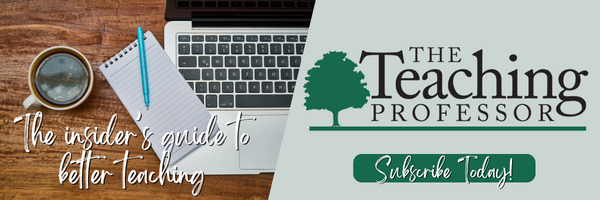This article first appeared in The Teaching Professor on June 12, 2013 © Magna Publications. All rights reserved.
Here’s a great story. A graduate student is attending a lecture given by one of her intellectual heroes, the Brazilian educator and theorist Paulo Freire. She takes notes furiously, trying to capture as many of his words as possible. Seeing that she is keenly interested in what Freire had to say, his translator asks if she would like to meet him. Of course! She is introduced and he begins by inquiring about her work. Then he graciously agrees to respond to a set of questions she and her colleagues hoped they would get the chance to ask him. She is impressed beyond belief, but time prevents her from asking one last, difficult question. They meet accidently once more at the event and he wonders if she asked all her questions? No, there is one more. “Given your work, we want to know, ‘Where is the hope?’” Without hesitating he moves toward her, takes her face in his hands, looks into her eyes, and replies, “You tell them, ‘You are the hope, because theory needs to be reinvented, not replicated … it is a guide. We make history as we move through it and that is the hope.’”
It’s a quote Linda Shadiow never forgot and a story she continues to tell. It’s also part of a collection of stories she shares in her book, What Our Stories Teach Us: A Guide to Critical Reflection for College Faculty. The book may sound like a short story collection, but it’s not. Shadiow believes that the stories we tell as teachers—stories about our experiences as students and accounts from our lives teaching students—can be used to deepen understandings of ourselves as teachers. She uses her stories and those of others to illustrate how these stories function as key events in the life of a teacher.
Most faculty have heard the admonitions that teachers should do more critical reflection but many are confused as what that means and how they go about doing it. As someone said to me, “I don’t understand. I should think more about my teaching? I do that, but I don’t seem to come up with any splendid new insights.”
Understanding ourselves as teachers—what beliefs inform the decisions we make, what values determine how we relate to students, and what assumptions ground the collection of policies and practices we use—isn’t easy. We are so vested in our instructional identities that it’s difficult to step back and see our teaching objectively. Shadiow proposes that stories can be a way into more realistic perspectives and deeper insights. She has theory and research to back up this belief (they are referenced in the book), but it’s the stories themselves that make the case most convincingly.
She opens up her stories to analysis and invites readers to do the same with theirs. The process she lays out starts with identifying your teaching and learning stories—the ones you regularly tell others. Then she shows how those stories can be explored for patterns and how the assumptions embedded in them can be located and analyzed. As you read the book, you find yourself looking at your stories from different vantage points and those varying perspectives change how the story looks and what it reveals. By the end, you are seeing how your teaching has evolved, how it reflects what you believe, and where your instructional practice might be headed. It’s a way of doing critical reflection that makes it easy to understand what it is and why it’s a valuable endeavor.
The book is beautifully written—which makes it a joy to read. It’s warm and engaging with insightful quotations and intriguing metaphors sprinkled throughout. If you’re looking for a good professional reading experience, this is the book I’d recommend. You don’t often find pedagogical reading that effectively offers both information and inspiration. I first saw this book as a manuscript, but now I’ve read it as a book, and used the process to explore a set of my favorite stories. I’m still telling the same stories, but I am understanding them, and my teaching self, in exciting new ways.
Reference
Shadiow, L. K. What Our Stories Teaching Us: A Guide to Critical Reflection for College Faculty. San Francisco: Jossey-Bass, 2012.







